5 Houses With Different Climate-Responsive Screens
Whether it's for sun-shading or promoting natural ventilation, external screens are still the architects' go-to solution
With global warming on the rise, sustainable design solutions that lessen our dependence on energy-guzzling air conditioning are even more important. Fortunately, Singapore architects are well-versed in techniques that respond to our tropical climate – from time-tested passive cooling to cutting-edge technology.
One such time-tested technique is the versatile screen. Placed in the right location and using appropriate materials, it doubles as a sun-shading device and a filter for natural light and ventilation. For our land-scarce homes, it also acts as a privacy feature. With a bespoke touch, it even adds an aesthetic flourish to a facade.
One such time-tested technique is the versatile screen. Placed in the right location and using appropriate materials, it doubles as a sun-shading device and a filter for natural light and ventilation. For our land-scarce homes, it also acts as a privacy feature. With a bespoke touch, it even adds an aesthetic flourish to a facade.
2. Concrete hollow-block screen
Home: Semi-detached house
Designer: Kelvin Lim of Hier Architects
To maximise land use without sacrificing privacy, Hier Architects devised a two-layer permeable skin on the afternoon sun-side of this semi-detached house. Ventilation blocks made of concrete make up the screen portion on the exterior side. This allows natural ventilation and daylight into the house. On the interior side, tinted glass sliding doors give the owners the option of shutting harsh weather (like rain and haze) out.
Read more about this home
Home: Semi-detached house
Designer: Kelvin Lim of Hier Architects
To maximise land use without sacrificing privacy, Hier Architects devised a two-layer permeable skin on the afternoon sun-side of this semi-detached house. Ventilation blocks made of concrete make up the screen portion on the exterior side. This allows natural ventilation and daylight into the house. On the interior side, tinted glass sliding doors give the owners the option of shutting harsh weather (like rain and haze) out.
Read more about this home
3. Lattice-style metal screen
Home: Terrace house
Designer: Robert Cheng of Brewin Design Office
Like house #2, this house features a two-layer permeable skin. In this terrace house’s case, both the screen and the inner glass windows can be opened and folded up so that the front and back end of the house enjoys cross-ventilation. On a rainy day, the screens can remain open, and the glass windows shut. On a hot, humid day, the screens can be closed, and the glass windows open.
Read more about this home
Home: Terrace house
Designer: Robert Cheng of Brewin Design Office
Like house #2, this house features a two-layer permeable skin. In this terrace house’s case, both the screen and the inner glass windows can be opened and folded up so that the front and back end of the house enjoys cross-ventilation. On a rainy day, the screens can remain open, and the glass windows shut. On a hot, humid day, the screens can be closed, and the glass windows open.
Read more about this home
4. Aluminium screen
Home: Two semi-detached houses in Holland Grove
Designers: Darlene Smyth and CJ Foo of A D Lab
The folding powder-coated aluminium screens of this pair of semi-detached houses were designed for sun shading and privacy. These are layered over glass panels and windows to give the owners the option of air conditioning.
Read more about this home
Home: Two semi-detached houses in Holland Grove
Designers: Darlene Smyth and CJ Foo of A D Lab
The folding powder-coated aluminium screens of this pair of semi-detached houses were designed for sun shading and privacy. These are layered over glass panels and windows to give the owners the option of air conditioning.
Read more about this home
5. Pinewood panel screen and perforated steel screen
Home: Five-bedroom bungalow on Frankel Avenue
Designers: LAUD Architects in collaboration with homeowner Dawn Lim
For certain parts of this house’s facade, manually drilled cut-outs on the pinewood panels cladding the exterior become a screen that creates a play of light and shadow in the interiors.
On the horizontal plane, the architects used perforated steel on the staircase to allow daylight to permeate the lower, darker parts of the house.
Read more about this home
Home: Five-bedroom bungalow on Frankel Avenue
Designers: LAUD Architects in collaboration with homeowner Dawn Lim
For certain parts of this house’s facade, manually drilled cut-outs on the pinewood panels cladding the exterior become a screen that creates a play of light and shadow in the interiors.
On the horizontal plane, the architects used perforated steel on the staircase to allow daylight to permeate the lower, darker parts of the house.
Read more about this home
Tell us
Which screen design could you see in your own home? Tell us in the Comments below. And don’t forget to save your favourite images, save the story, and join in the conversation.
Find an architect on Houzz
Which screen design could you see in your own home? Tell us in the Comments below. And don’t forget to save your favourite images, save the story, and join in the conversation.
Find an architect on Houzz



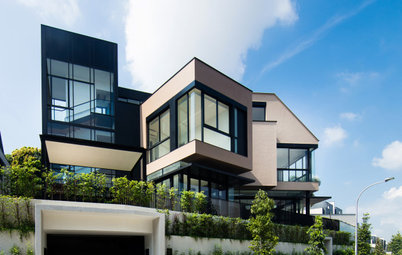
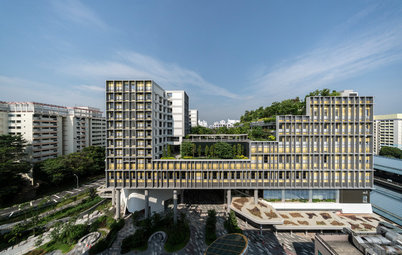

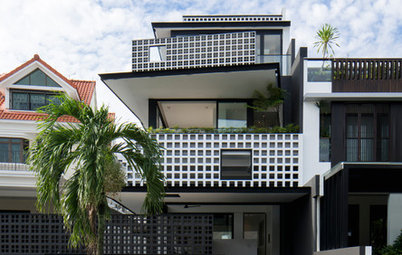
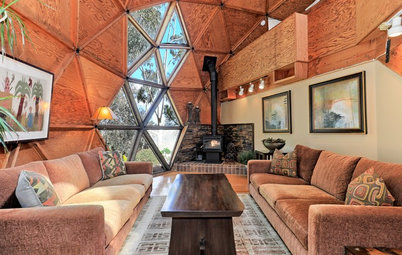
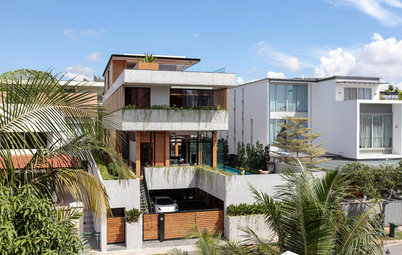
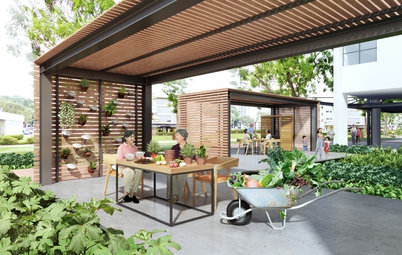
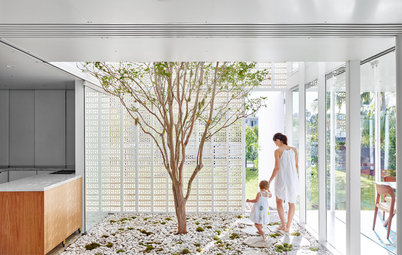
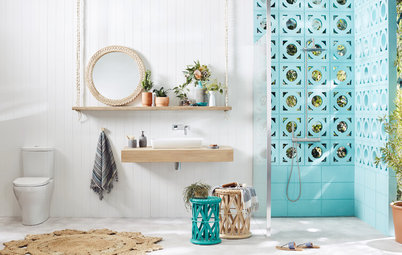
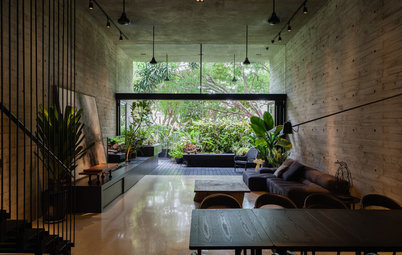
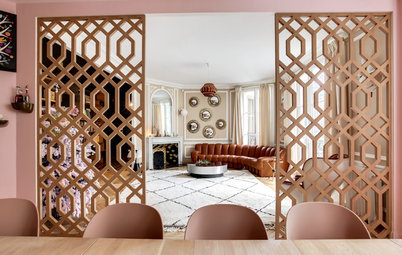
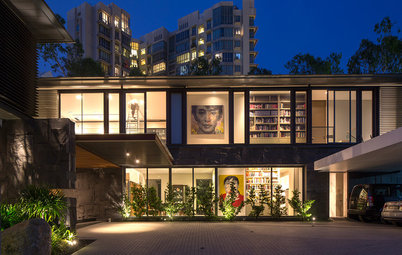
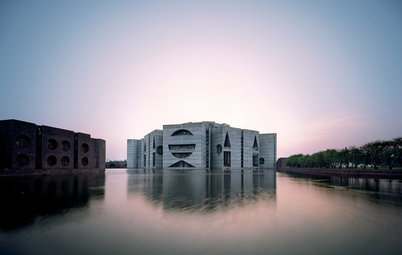
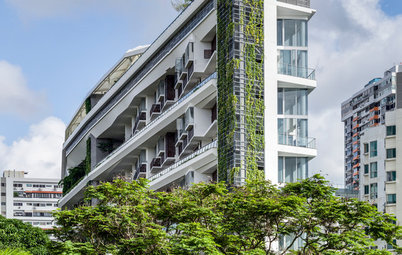
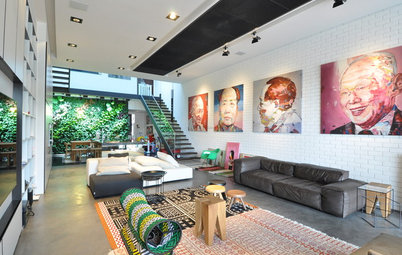
Home: Three-and-a-half storey bungalow on East Coast Drive
Designers: Teo Yee Chin, Liow Zhengping, Yeo Yih Hsiu of Red Bean Architects
Architect Teo Yee Chin, whose home this is, customised the brick facade with a pattern depicting the East Coast sunrise. Four different brick colours, together with a staggered placement that allows for well-planned openings between bricks, make up this screen. The screened mass sits on stilts to allow air to circulate around the open ground floor and cool the upper floors.
Read more about this home